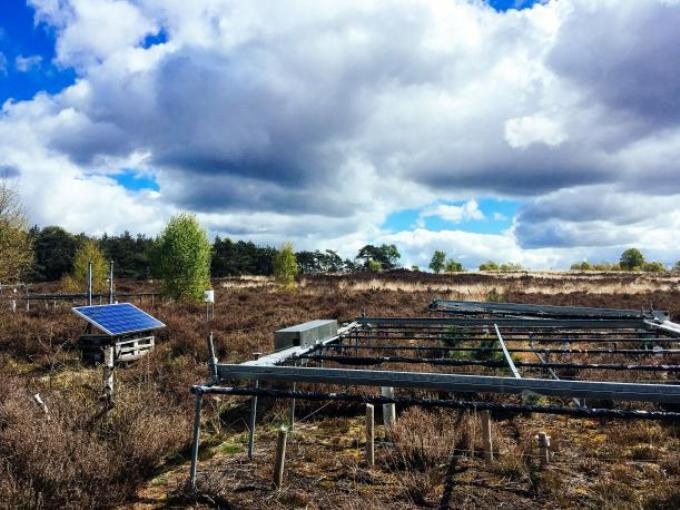Dec 3 2018
Scientists at Sweden-based Lund University, together with colleagues from the University of Amsterdam, have examined how long-term drought impacts countless numbers of crucial bacteria concealed in the soil beneath people’s feet. The study results demonstrate that such extreme weather conditions establish the way soils react to climate change in the future.
 The long-term drought experiment in the Netherlands from where the soils were sampled. A rain curtain has excluded precipitation from entering the soil during the summer for 18 years, simulating the drought. (Image credit: Evy de Nijs)
The long-term drought experiment in the Netherlands from where the soils were sampled. A rain curtain has excluded precipitation from entering the soil during the summer for 18 years, simulating the drought. (Image credit: Evy de Nijs)
The study shows that compared to other microbes, microorganisms that have been exposed to long-term drought find it easier to recover when moisture increases again in the soil.
Our results show that the historical climate will affect how microorganisms respond and contribute to climate change in the future. Bacteria adapted to drought could slow the rate of carbon loss from soils.
Lettice Hicks, Biologist, Lund University.
In this analysis, Hicks and her colleagues studied the soil that had been subjected to long-term drought—that is, 18 years of experimental summer drought in this case. Their objective was to analyze how the microbes cope and recover from such climatic conditions.
In moist soil, the bacteria are normally active and break down organic materials. This process offers key nutrients to plants, and while some part of the carbon from organic matter is preserved in the soil as bacterial tissue, another part is discharged into the air in the form of carbon dioxide (CO2).
However, at the time of drought, the bacteria no longer grow and stop performing their essential task in the ecosystem. Once the soil regains moisture after the rainfall, the bacteria become active again. This leads to a sudden increase in emissions of CO2 into the air; however, as the bacteria recover very rapidly, the proportion of carbon released from the soil reduces.
The carbon balance is affected, as the growth of bacteria keeps carbon in the soil. These findings suggest that microbial communities can adapt to changing climatic conditions, and this might slow the rate of carbon loss from soils.
Lettice Hicks, Biologist, Lund University.